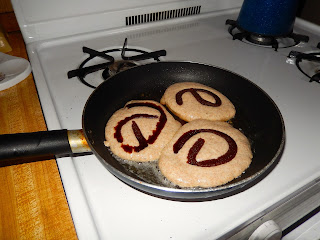Coastal BC Birds: Song Sparrow
 |
| A Song Sparrow visits the cabin front porch in mid-January. |
I tossed a small handful of birdseed next to the picnic table to see what would happen. He stuck around to eat lots of seeds before taking off.
I wasn't sure what kind of bird it was so I Googled likely varieties, but none of the pictures looked exactly right. Then I discovered WhatBird.com. I used the bird identification tool and narrowed it down. Then I discovered their forum section and joined. Within a day, site experts identified my little guy as a northwestern subspecies of Song Sparrow. This subspecies tends to be darker than its southern relatives.
Song Sparrows are year-round residents of Coastal BC, but I don't see or hear them much at the cabin this time of year. I can't wait until spring comes and the birds sing in the new day as the sun rises behind Goat Island to the east. -- Margy
































